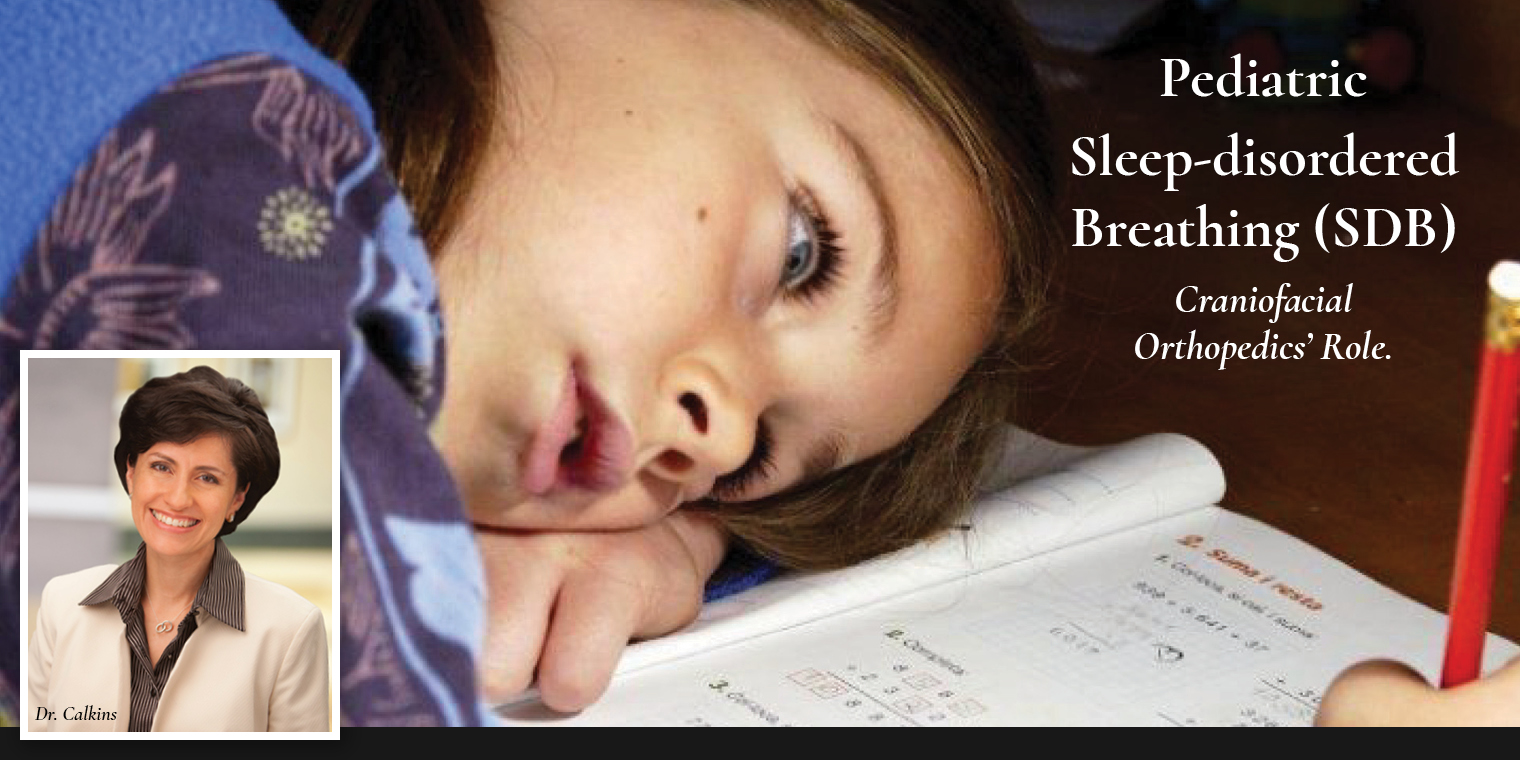Craniofacial Orthopedics’ Role.
As member of the Northern Virginia Airway Group, Dr. Calkins, Specialist in Orthodontics & Dentofacial Orthopedics, focuses on the correct function, growth and development of the craniofacial complex.
In Sleep-disordered breathing (SDB), a decrease in the lumen of the upper airway happens during sleep. Children can have airflow limitations such as apnea, complete cessation of air exchange at nose and mouth; or hypopnea, a partial cessation of air on the same sites.
The pharynx is collapsible during sleep, with no rigid support and functions differently from wakefulness than sleep. The upper airway needs the correct development of skeletal muscles and soft tissue to support its function. External factors, that can influence the genetic and environmental development of the upper airway; can have an adverse effect on upper airway. These factors have been identified under four categories:
- Bone structures (oral-facial bones)
- Infiltration of soft tissues (fat)
- Leukotriene (Inflammatory mediator)
- Inflammation arising from abnormal breathing during sleep.
During Dr. Calkins comprehensive clinical evaluation, a pediatric sleep questionnaire is used to elucidate if infants, toddlers, preschool children and teenagers could have complaints that are related to sleep-disordered breathing.
Toddlers can experience noise breathing, nocturnal sweating, mouth breathing, poor eating or failure to thrive, witnessed apneic episodes. In preschool children heavy snoring, mouth breathing, drooling, agitated sleep, sleep terrors, persistence of bedwetting, aggressiveness, hyperactivity inattention.
Abnormal growth patterns, delayed puberty, dental problems such as small jaws, overcrowding can be seen in age groups 5-14 years-old.
We have learned that changes in oral-facial growth can begin at birth. The general pediatric population can have a percentage of sleep disordered-breathing as high as 11%. Dr. Calkins, at the Center for Facial and Airway Development at Sunrise Orthodontics; can assist parents and children in recognizing abnormal craniofacial growth that can have a negative impact in the function of the upper airway. Adequate oral-facial bone development, will decrease the risk for sleep-disordered breathing in children as young as 3 years old, or as soon as the abnormal breathing is recognized in early infancy.
This article references Dr. Christian Guilleminault from Stanford University. Credits are given to Dr. Guilleminault.
For more information on Pediatric SDB, please reach Dr. Calkins at Sunrise Orthodontics.
Phone 703.476.3969
www.sunrise-orthodontics.com






